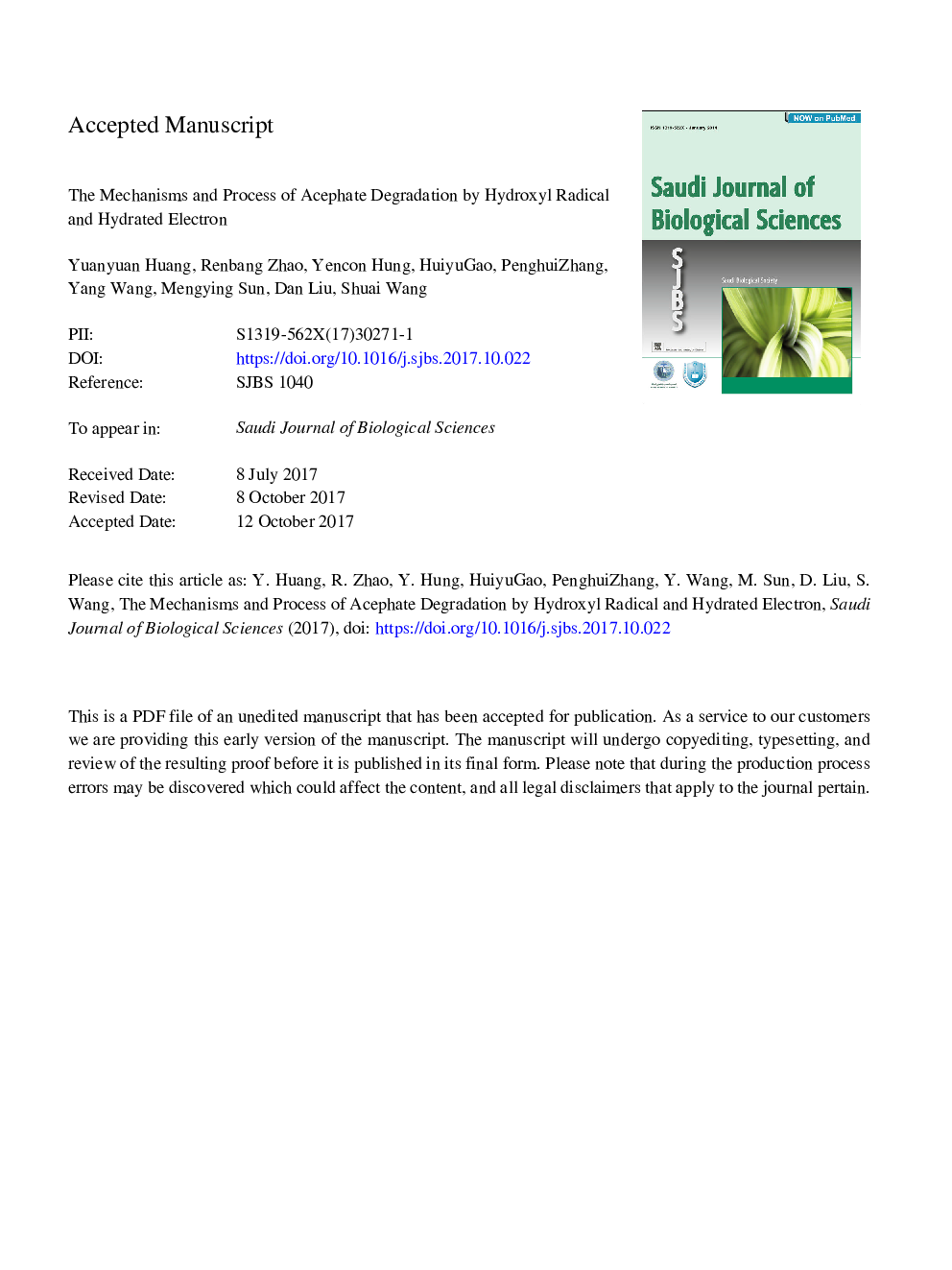| کد مقاله | کد نشریه | سال انتشار | مقاله انگلیسی | نسخه تمام متن |
|---|---|---|---|---|
| 8849885 | 1618659 | 2018 | 14 صفحه PDF | دانلود رایگان |
عنوان انگلیسی مقاله ISI
The mechanisms and process of acephate degradation by hydroxyl radical and hydrated electron
ترجمه فارسی عنوان
مکانیسم ها و روند تخریب آسفات توسط الکترون هیدروکسیل رادیکال و هیدروکسیل
دانلود مقاله + سفارش ترجمه
دانلود مقاله ISI انگلیسی
رایگان برای ایرانیان
موضوعات مرتبط
علوم زیستی و بیوفناوری
علوم محیط زیست
بوم شناسی
چکیده انگلیسی
The degradation process of acephate in aqueous solution with OH and eaqâ produced by 60Co-γ irradiation and electron pulse radiolysis was studied in the present paper. In the aqueous solution, acephate reacted with eaqâ and transformed to transient species which can absorb weakly in the wavelength range of 300-400â¯nm and decay very fast. According to the decay of hydrated electron, the reaction rate constant of eaqâ and acephate is (3.51â¯Â±â¯0.076)â¯Ãâ¯109â¯dm3·molâ1·sâ1. The transient species produced in the reaction of OH and acephate do not distinctly absorb the light in the wavelength range of 300-700â¯nm, so the decay and kinetics of the transient species cannot determinedirectly. The competing reaction of KSCN oracephate with OH were studied to obtain the reaction rate constant of OH and acephate, which is (9.1â¯Â±â¯0.11)â¯Ãâ¯108â¯dm3·molâ1·sâ1. Although acetylamide and inorganic ions were determined in the products of the reaction of acephate with OH or eaqâ, the concentration of inorganic ions in the products of the reaction of acephate with OH is higher than that in the product of the reaction of acephate with eaqâ. Moreover, there were sulfide in the products of the reaction of acephatewith eaqâ. The degradation pathways of acephate by OH and eaqâ were also proposed based on the products from GC-MS.
ناشر
Database: Elsevier - ScienceDirect (ساینس دایرکت)
Journal: Saudi Journal of Biological Sciences - Volume 25, Issue 2, February 2018, Pages 226-233
Journal: Saudi Journal of Biological Sciences - Volume 25, Issue 2, February 2018, Pages 226-233
نویسندگان
Yuanyuan Huang, Renbang Zhao, Yencon Hung, Huiyu Gao, Penghui Zhang, Yang Wang, Mengying Sun, Dan Liu, Shuai Wang,
